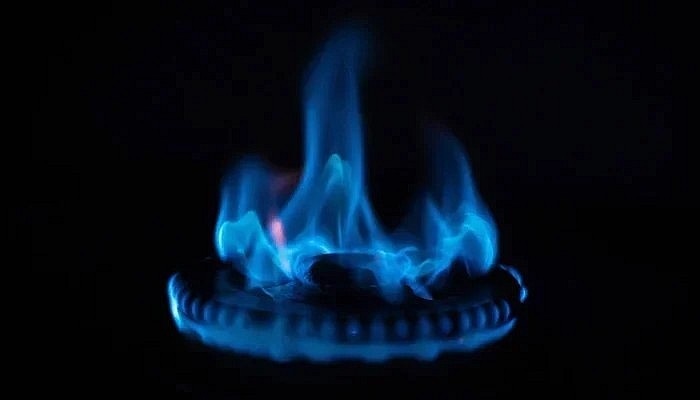IMF condition: Gas tariff for protected consumers may rise 100pc from January
This yet another increase, follows the 193 percent gas tariff hike on November 1, 2023. In that however, the protected gas consumers didn’t experience any increase except for that in meter charges from Rs10 to Rs400 per month. These protected gas consumers constitute 57 percent of the total countrywide consumers.
The authorities want to increase the gas prices of the protected consumers by 100 percent in two phases, in January and July 2024, which are currently at the lowest ebb compared to the other categories of domestic consumers. Therefore it would do away with the Rs100 billion deficit incurred on the facility in a staggered manner.
 |
| A representational image showing a gas flame. — AFP/File |
Under the IMF diktat, the government is also set to end the disparity of gas tariff between export and non-export industries in January 2024 which will fetch them a Rs20-30 billion more revenue. The export and non-export sectors will be treated as one industrial sector with uniform tariffs, top officials of the energy ministry told The News. In addition, the IMF also wants the government to do away with the cross-subsidies of Rs27 billion being extended to the fertilizer giants - Engro Fertilizer in the Sui Northern system and Fauji Fertilizer Bin Qasim Limited in the Sui Southern system.
“Those captive power plants connected with the natural electricity grid would not be provided gas, but those not connected with the national grid will now get the RLNG and not the local gas. The government is working to increase the gas tariff for the export sector by Rs100 per MMBtu both for export and captive plants to bring their tariff at par with the tariff of non-export industry.” “According to IMF directions, these measures would generate additional revenue of over Rs100 billion. This would scale down the natural gas circular debt that currently stands at Rs1,250 billion,” officials said.
At present, the gas tariff for the export sector stands at Rs2,100 per MMBtu and for non-export is at Rs2,200 per unit. The gas tariff for captive power plants for the export industry stands at Rs2,400 per MMBtu and for captive power plants of the non-export industry is at Rs2,500 per MMBtu. “The authorities want to end the disparity between their tariffs which will help raise the revenue of Rs20-30 billion per year.”
Coming towards the cross-subsidy of Rs27 billion being extended to the fertilizer sector, the officials said that the gas tariff for feedstock stands at Rs580 billion and Rs1,580 per MMBtu as fuel. The authorities want to end the cross-subsidy of Rs27 billion by bringing their tariff to Rs1,271 per MMBtu both for feedstock and fuel purposes.
Despite the rise, they argued that the expected increase for protected consumers would stay much below that of the other categories. In the first phase from January 2024, it would reduce to half the Rs100 billion deficit. The next phase of a hike from July 1 will remove the remaining Rs50 billion deficit.
According to the revised calculation in wake of the proposed increase, 0.25hm3 category will pay Rs242 from existing Rs121 per MMBtu, 0.5hm3 consumers tariff will hike to Rs300 from Rs150 per MMBtu, 0.6hm3 consumers tariff will go up to Rs400 from Rs200 per MMBtu and 0.9hm3 category of consumers tariff will be at Rs500 from Rs250 per MMBtu.
The government has already increased the gas tariff by up to 193 percent from November 1, 2023, under which it will collect revenue of Rs980 billion in the ongoing FY24 even though the revenue requirements of both the gas companies stand for ongoing FY24 at Rs705 billion. This has allowed the collection of an additional Rs275 billion to pay the Rs210 billion cost incurred for RLNG diversion to the domestic sector in the ongoing winter season. It also offsets the loss of Rs65 billion incurred due to the failure of the government to notify gas price hike four months late.
